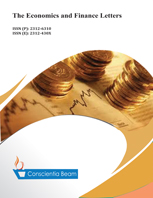An Empirical Investigation of Real Exchange Rate Responses to Foreign Currency Inflows: Revisiting the Dutch Disease Phenomenon in South Asia
DOI:
https://doi.org/10.18488/journal.29.2020.71.23.46Abstract
Inflows of foreign currencies into the developing economies, in particular, have been associated with the Dutch disease phenomenon whereby a surge in such inflows is believed to stimulate real appreciation of the real exchange rate. As a result, there could be deindustrialization impacts on the recipient economies following a growth in the non-tradable sector at the expense of the tradable sector's contraction. This paper empirically investigates the dynamics of real exchange rate responses to official development assistance, foreign direct investments and international remittances flowing into the four emerging South Asian economies Bangladesh, India, Pakistan, and Sri Lanka. The results from the extensive econometric analyses show that a 1% rise in the total volume of official development assistance and remittances received appreciates the real exchange rate by 0.18% and 0.23% respectively. In contrast, a 1% rise in FDI inflows was found to trigger a 0.19% depreciation of the real exchange rate. Furthermore, the Dumitrescu and Hurlin (2012) test results reveal unidirectional long run causalities running from official development assistances and FDI inflow to real exchange rate while certifying a bidirectional causal association between inward international remittances and the real exchange rate.

